Words and images Vanini Belarmino
This article is an epilogue by Vanini Belarmino, the curator of In Situ, Performance as Exhibition, and managing director of Belarmino&Partners.
To work as an independent curator is to move through a field of both freedom and fragility. It means persisting amid uncertainty, guided by conviction and curiosity—particularly when engaging with the fleeting and intangible language of performance art. In Situ, Performance as Exhibition has been a remarkable journey: nomadic in form, unfolding across Singapore, the Philippines, and now, in its closing chapter, Malaysia.
The research that ultimately led to In Situ began in 2021 through a series of visits to artists’ studios in Copenhagen and Berlin. Meeting them in their working environments revealed how they live, what sustains them, and what drives their practice—these are often resilient to permanence. These encounters served as the quiet foundations from which In Situ later emerged. It was only in 2024 that the project fully took shape, transforming these research insights into live encounters—performances held in coconut plantations and town squares, in the mountains and by the sea, within historic landmarks, art institutions, and the everyday rhythm of cities.
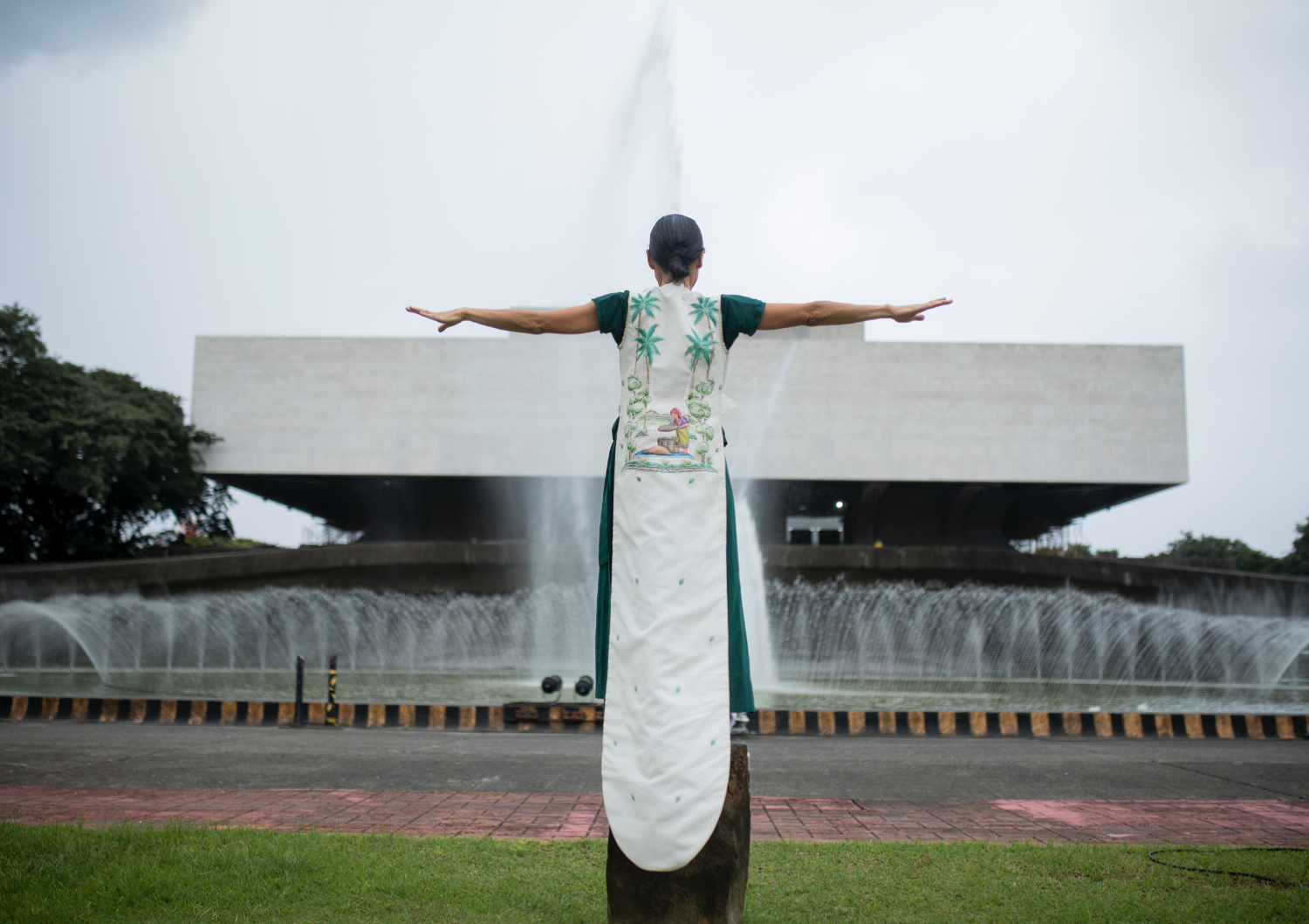

Since its inception, In Situ has brought together artists whose practices explore the boundary between form and disappearance: Lilibeth Cuenca Rasmussen, Molly Haslund, Sophie Dupont, Filip Vest and Kai Merke, and now Christian Falsnaes, Hesselholdt & Mejlvang, and once again Haslund. Alongside them were Southeast Asian artists—Critical Craft Collective, Christine Crame, Ea Torrado, Daloy Dance Company, Jeremy Mayores, Kyle Confesor, Elizabeth de Roza, Sasa Cabalquinto, and Urich Lau—who have expanded these dialogues, anchoring them within a shared and evolving regional context.
Above: Lilibeth Cuenca Rasmussen, Mobile Mirrors, BRIEF ENCOUNTERS, LUSTWARANDE, 2018. Photographed by PH.GJ. van ROOIJ. Mobile Mirrors is a performance featuring one or more mannequins, each clad in a mosaic of mirror shards. Below: Sophie Dupont, Marking Breath (2024) for In Situ, Performance as Exhibition, organized by Belarmino&Partners in collaboration with McNally School of Fine Arts, LASALLE College of the Arts, University of the Arts Singapore, 5 April 2024. Photographed by Ken Cheong. “Sophie Dupont will mark her breath by scratching lines onto a copper plate, creating an abstract score through this subtle, meditative act.”
In Malaysia, In Situ reaches a moment of pause and transformation. The concluding edition introduces an exhibition component—an attempt to hold, however briefly, what cannot truly be held. The materials presented are not merely documents, but outcomes, traces, and evidence—echoes of actions once lived. They point to what lingers after the performance has ended: a breath, a mark, a residue of encounter that continues to move within those who witnessed it.
Across landscapes and temporalities, In Situ has asked: what happens after a performance? Perhaps the answer lies not in the image or the record, but in the way presence reshapes memory and space. Each gesture performed leaves a vibration that extends beyond time, forming new constellations of connection between artist, place, and audience.
Above: Molly Haslund, Teenagers Eating Ice Cream Cones, Den Frie, 2025. Below: Sofie Hesselholdt and Vibeke Mejlvang, Be a beautiful force together. Photographed by Jens Panduro.
This reflection concludes a cycle that began with research in 2021 and came into being in 2024—one that has since gathered people, movements, and moments across continents. As In Situ closes this chapter and looks toward what may follow, the conversations with Christian Falsnaes, Hesselholdt & Mejlvang, and Molly Haslund that precede it offer insights into these crossings: how ideas travel, transform, and return. Together, they mark both an ending and the quiet beginning of a new cycle—the trace before the next performance, the breath before the next act. •
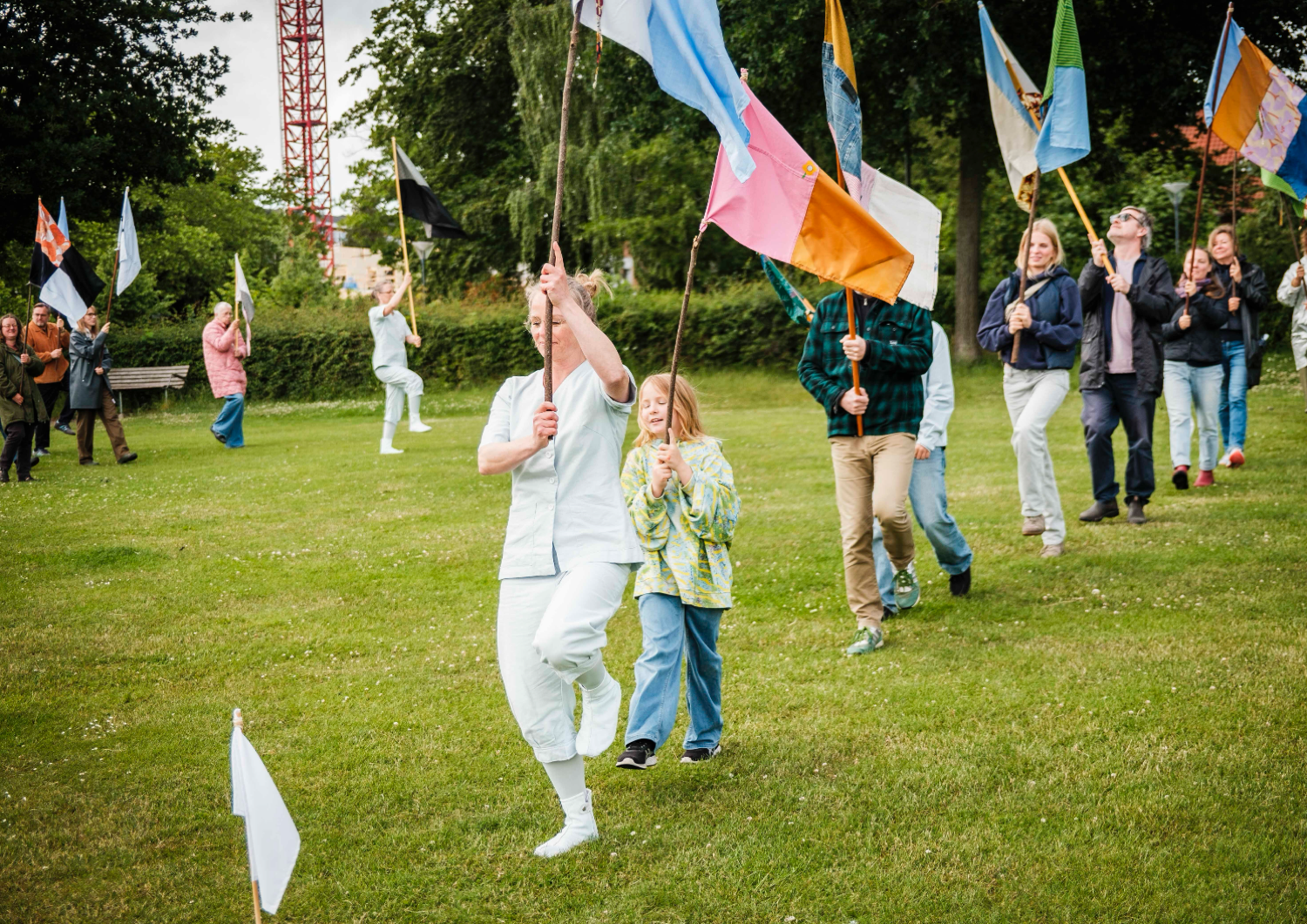

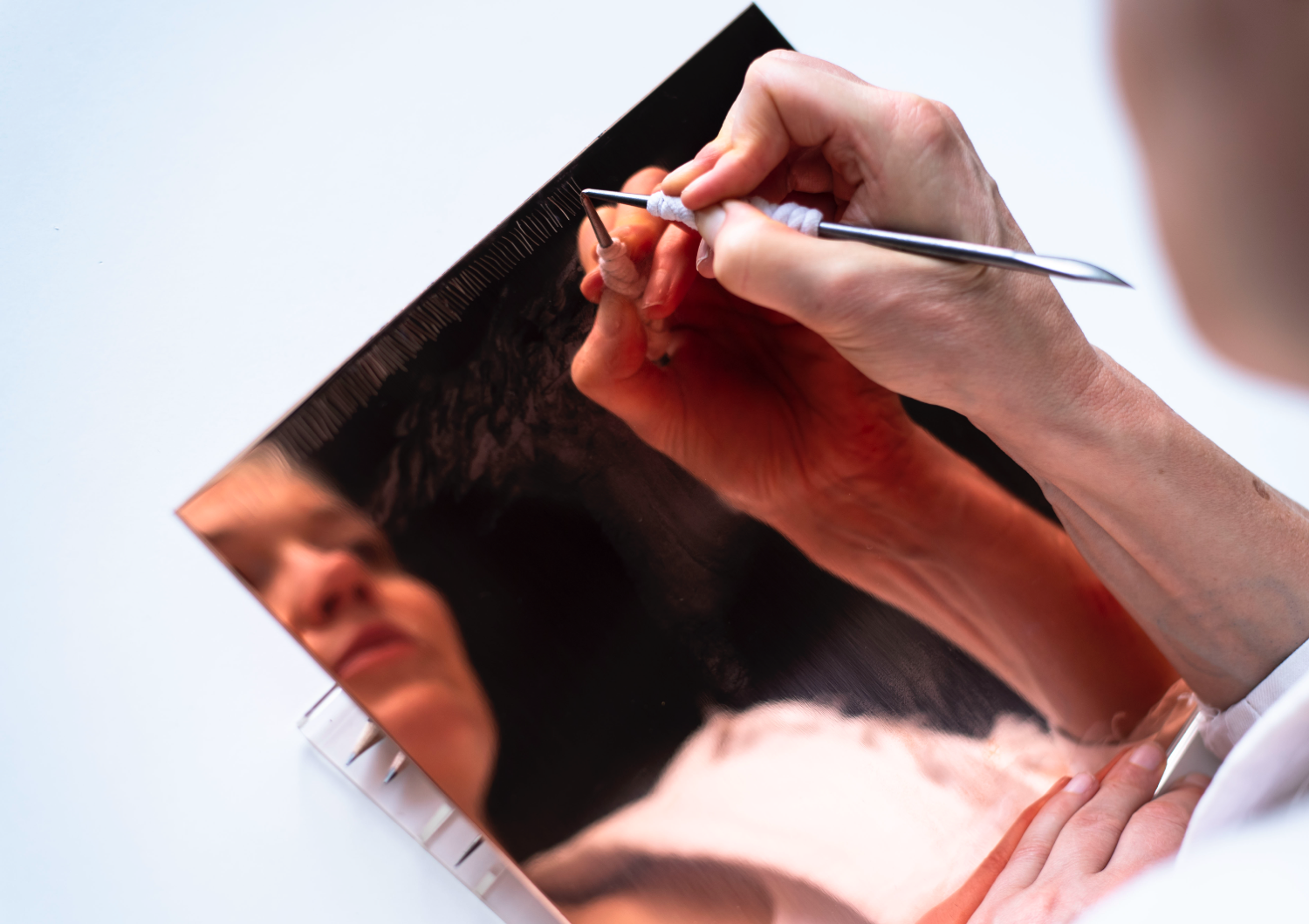
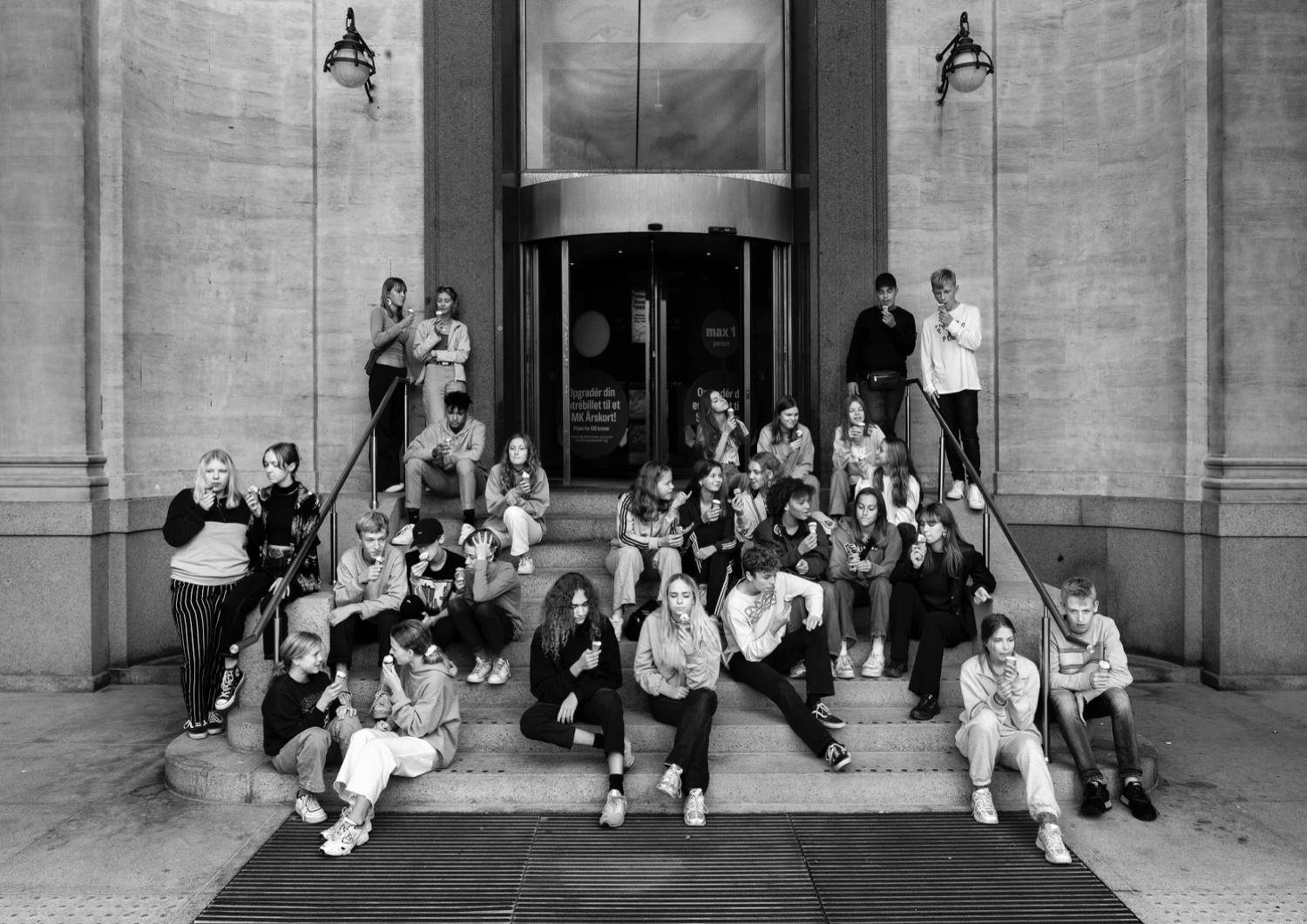
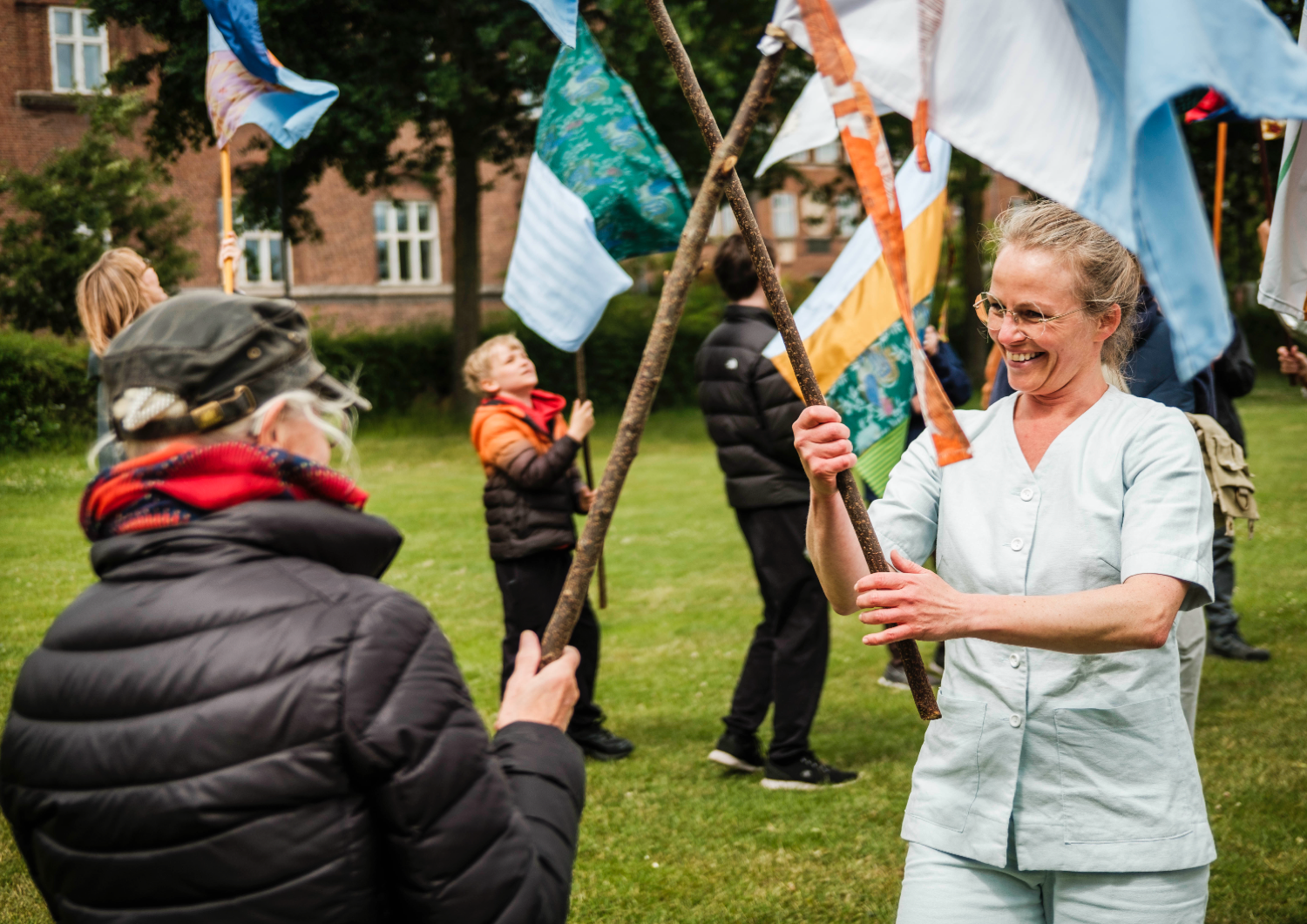
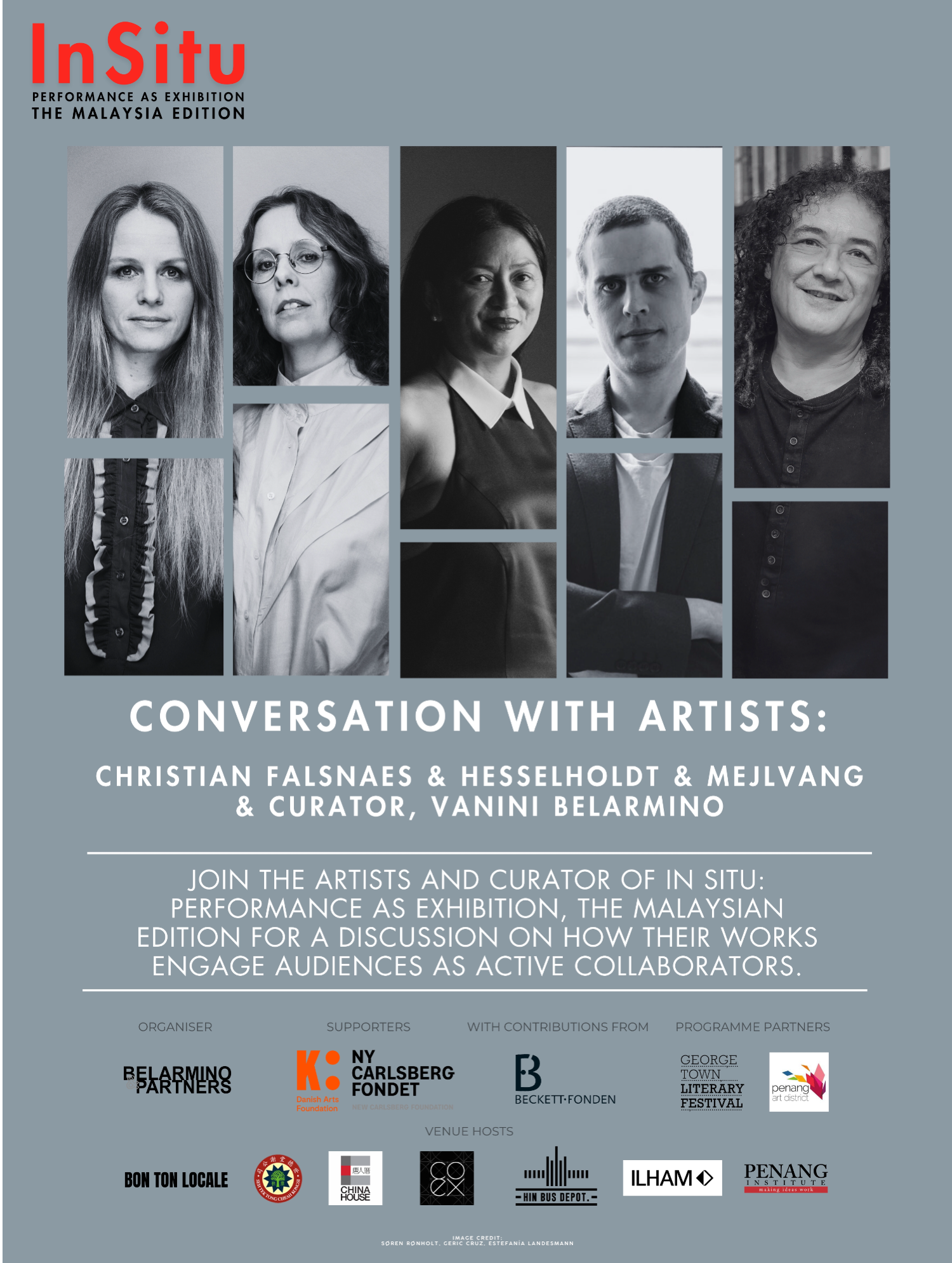
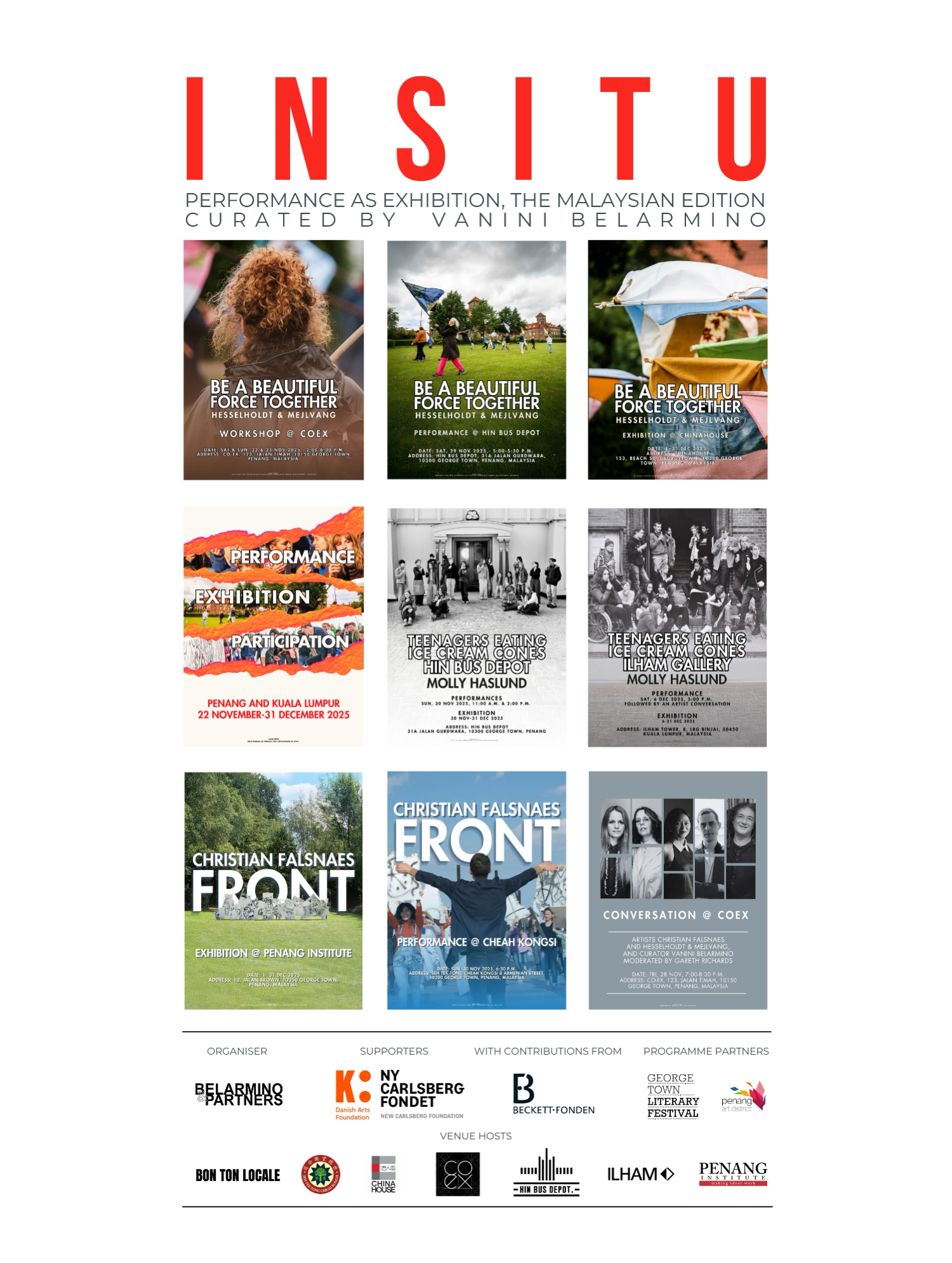

3 Responses